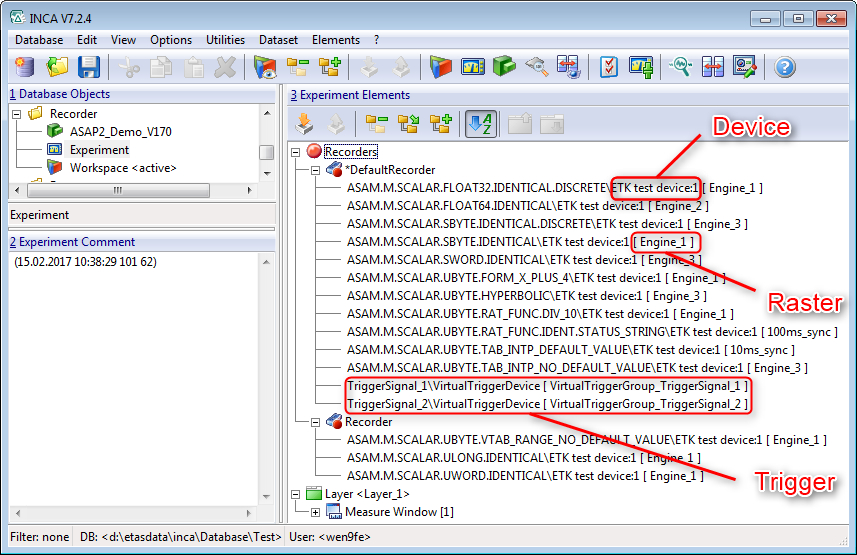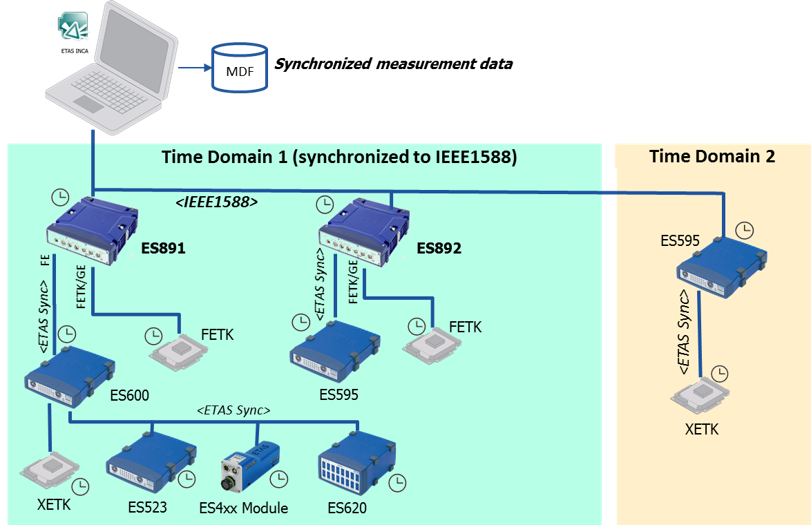Functions at a glance
- Reuse of recorders in other experiments
- IEEE1588-conform Time Synchronization with ES891/ES892 modules
- Improved Time Synchronization with INCA
- MATLAB®/Simulink® interface: Support of new versions and functional improvements
Reuse of recorders in other experiments

In the INCA database browser (DBB) recorders are visualized in the Experiment Elements Window in the same way as measurement and calibration widgets. "Recorder" means the configuration of a measurement data acquisition which contains the measurement signals, the signal sources, the measurement raster as well as the trigger conditions.
The following additional information is now also displayed in the Experiment Elements Window of the Data Base Browser:
- Device
- Raster
- Trigger
Using copy & paste single recorders of an experiment can be transferred into another one in the same way as layers or widgets.
IEEE1588-conform Time Synchronization with ES891/ES892 modules

The time synchronization of ES891/ES892 modules is conform to IEEE1588 standard. It facilitates the integration into heterogeneous test setups and automation solutions with a central clock. On the side of software application INCA expanded its time domain management interfaces to provide higher precision of the time synchronization.
Improved Time Synchronization with INCA
In order to support the new ES8xx modules, the time synchronization has been improved on all data transfer protocols:
XCP, FETK, XETK, ETK, CAN/CAN FD monitoring, FlexRay monitoring, LIN monitoring, ES4xx “daisy chain”, CCP, UDS, and KWP2000.
MATLAB®/Simulink® interface: Support of new versions and functional improvements
INCA-SIP now supports MATLAB® 2016a / 2016b (both 32 and 64 bit version). The feature set of INCA-SIP supporting Direct Lookup Table Block & Interpolation Blocks has been extended: In addition to already supported 1D, 2D and 3D blocks, now also the 4D blocks are supported.